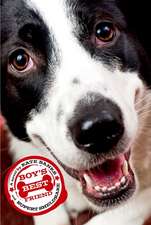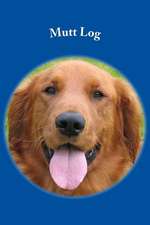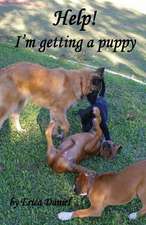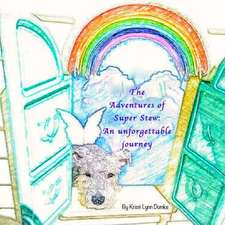Dogs That Know When Their Owners Are Coming Home: And Other Unexplained Powers of Animals
Autor Rupert Sheldrakeen Limba Engleză Paperback – 31 mar 2011
These intriguing questions about animal behavior convinced world-renowned biologist Rupert Sheldrake that the very animals who are closest to us have much to teach us about biology, nature, and consciousness.
Filled with captivating stories and thought-provoking analysis, Dogs That Know When Their Owners Are Coming Home is a groundbreaking exploration of animal behavior that will profoundly change the way we think about animals, and ourselves. After five years of extensive research involving thousands of people who own and work with animals, Sheldrake conclusively proves what many pet owners already know -- that there is a strong connection between humans and animals that lies beyond present-day scientific understanding.
With a scientist's mind and an animal lover's compassion, Sheldrake compellingly demonstrates that we and our pets are social animals linked together by invisible bonds connecting animals to each other, to their owners, and to their homes in powerful ways. Sheldrake's provocative ideas about these social, or morphic, fields explain the uncanny behavior often observed in pets and help provide an explanation for amazing animal behavior in the wild, such as migration and homing.
Dogs That Know When Their Owners Are Coming Home not only provides fascinating insight into animal, and human, behavior, but also teaches us to question the boundaries of conventional scientific thought. This remarkable book deserves a place next to the most beloved and valuable books on animals, such as When Elephants Weep, Dogs Never Lie About Love, and The Hidden Life of Dogs.
From the Hardcover edition.
Preț: 84.97 lei
Nou
Puncte Express: 127
Preț estimativ în valută:
16.26€ • 17.66$ • 13.66£
16.26€ • 17.66$ • 13.66£
Carte indisponibilă temporar
Doresc să fiu notificat când acest titlu va fi disponibil:
Se trimite...
Preluare comenzi: 021 569.72.76
Specificații
ISBN-13: 9780307885968
ISBN-10: 0307885968
Pagini: 385
Dimensiuni: 128 x 210 x 22 mm
Greutate: 0.3 kg
Ediția:Updated, Revise
Editura: Three Rivers Press (CA)
ISBN-10: 0307885968
Pagini: 385
Dimensiuni: 128 x 210 x 22 mm
Greutate: 0.3 kg
Ediția:Updated, Revise
Editura: Three Rivers Press (CA)
Recenzii
"Delightful . . . this book will turn our understanding of animals inside out."
-- Jeffrey Moussaieff Masson, author of When Elephants Weep
"Wonderful . . . splendid and thought-provoking."
-- Elizabeth Marshall Thomas, author of The Hidden Life of Dogs
-- Jeffrey Moussaieff Masson, author of When Elephants Weep
"Wonderful . . . splendid and thought-provoking."
-- Elizabeth Marshall Thomas, author of The Hidden Life of Dogs
Notă biografică
RUPERT SHELDRAKE studied natural sciences at Cambridge and philosophy at Harvard, then took a Ph.D. in biochemistry at Cambridge and was a Fellow of Clare College, Cambridge. The author of several books and more than 50 technical papers, he lives in London, England.
From the Hardcover edition.
From the Hardcover edition.
Extras
Part I
HUMAN-ANIMAL BONDS
Chapter 1
The Domestication of Animals
Many people love their pets and are loved by them. In this chapter I explore the evolution and the nature of human-animal bonds.
But first it is important to recognize that emotional bonds between people and animals are the exception rather than the rule. For every well-loved cat or dog, hundreds of domesticated animals are confined to intensive farming systems and research laboratories. In many Third World countries beasts of burden are often treated brutally. And traditional societies are not usually subscribers to modern ideals of animal welfare. Eskimos, for example, tend to treat their huskies harshly.
But in spite of all this exploitation, abuse, and neglect, many people form bonds with animals from childhood onward. Young children are commonly given teddy bears or other toy animals, and they like hearing stories about animals. Above all, most like keeping actual animals. The majority of pets live in households with children.
Hearing tales about frightening animals, including the wolf in "Little Red Riding Hood," and forming relationships with friendly ones seems to be a normal and fundamental aspect of human nature. Indeed our nature has been shaped throughout its evolutionary history by our interactions with animals, and all human cultures are enriched by songs, dances, rituals, myths, and stories about them.
The evolution of human-animal bonds
The earliest named hominid species, known from fossil remains, are Australopithecus ramidus and Australopithecus anamensis, dating back over 4 million years. The first stone tools were used about 2 1/2 million years ago, and signs of meat eating appear about a million years later, around the time that Homo erectus spread out of Africa into Eurasia (Figure 1.1). The use of fire may have begun around 700,000 years ago. Modern humans originated in Africa about 150,000 years ago. The first cave paintings, including many of animals, appeared about 30,000 years ago. The agricultural revolution began about 10,000 years ago, and the first civilizations and written scripts about 5,000 years ago.
Our ancestors lived as gatherers and hunters, with gathering far more important than hunting. The old image of man the hunter striding confidently out onto the African veldt is a myth. Only a small proportion of the food eaten by today's hunter-gatherers comes from animals hunted by the men; most comes from gathering done mainly by women. The exceptions are the hunter-gatherers of the plant-poor Arctic regions. Hominids and early Homo sapiens obtained small amounts of meat more by scavenging the kills left by more effective predators like big cats than by hunting for themselves. Big game hunting, as opposed to scavenging, may date back only some 70,000 to 90,000 years.
In hunter-gatherer cultures, human beings do not see themselves as separate from other animals but as intimately interconnected. The specialists in communication with the nonhuman world are shamans, and through their guardian spirits or power animals, shamans connect themselves with the powers of animals. There is a mysterious solidarity between people and animals. Shamans experience themselves as being guided by animals or as changing into animals, understanding their language, and sharing in their prescience and occult powers.
The earliest domesticated dogs
The first animals to be domesticated were dogs. Their ancestors, wolves, hunted in packs, just as men hunted, and from an early stage dogs were used in hunting as well as for guarding human settlements. Their domestication predated the development of agriculture.
The conventional view is the domestication of wolves began between 10,000 and 20,000 years ago. But recent evidence from the study of DNA in dogs and wolves points to a far earlier date for the first transformation of wolf to dog, over 100,000 years ago. This new evidence also suggests that wolves were domesticated several times, not just once, and that dogs have continued to crossbreed with wild wolves.
If this theory is confirmed, it means that our ancient companionship with dogs may have played an important part in human evolution. Dogs could have played a major role in the advances in human hunting techniques that occurred some 70,000 to 90,000 years ago.
The Australian veterinarian David Paxton goes so far as to suggest that people did not so much domesticate wolves as wolves domesticated people. Wolves may have started living around the periphery of human settlements as a kind of infestation. Some learned to live with human beings in a mutually helpful way and gradually evolved into dogs. At the very least, they would have protected human settlements, and given warnings by barking at anything approaching.
The wolves that evolved into dogs have been enormously successful in evolutionary terms. They are found everywhere in the inhabited world, hundreds of millions of them. The descendants of the wolves that remained wolves are now sparsely distributed, often in endangered populations.
From the Hardcover edition.
HUMAN-ANIMAL BONDS
Chapter 1
The Domestication of Animals
Many people love their pets and are loved by them. In this chapter I explore the evolution and the nature of human-animal bonds.
But first it is important to recognize that emotional bonds between people and animals are the exception rather than the rule. For every well-loved cat or dog, hundreds of domesticated animals are confined to intensive farming systems and research laboratories. In many Third World countries beasts of burden are often treated brutally. And traditional societies are not usually subscribers to modern ideals of animal welfare. Eskimos, for example, tend to treat their huskies harshly.
But in spite of all this exploitation, abuse, and neglect, many people form bonds with animals from childhood onward. Young children are commonly given teddy bears or other toy animals, and they like hearing stories about animals. Above all, most like keeping actual animals. The majority of pets live in households with children.
Hearing tales about frightening animals, including the wolf in "Little Red Riding Hood," and forming relationships with friendly ones seems to be a normal and fundamental aspect of human nature. Indeed our nature has been shaped throughout its evolutionary history by our interactions with animals, and all human cultures are enriched by songs, dances, rituals, myths, and stories about them.
The evolution of human-animal bonds
The earliest named hominid species, known from fossil remains, are Australopithecus ramidus and Australopithecus anamensis, dating back over 4 million years. The first stone tools were used about 2 1/2 million years ago, and signs of meat eating appear about a million years later, around the time that Homo erectus spread out of Africa into Eurasia (Figure 1.1). The use of fire may have begun around 700,000 years ago. Modern humans originated in Africa about 150,000 years ago. The first cave paintings, including many of animals, appeared about 30,000 years ago. The agricultural revolution began about 10,000 years ago, and the first civilizations and written scripts about 5,000 years ago.
Our ancestors lived as gatherers and hunters, with gathering far more important than hunting. The old image of man the hunter striding confidently out onto the African veldt is a myth. Only a small proportion of the food eaten by today's hunter-gatherers comes from animals hunted by the men; most comes from gathering done mainly by women. The exceptions are the hunter-gatherers of the plant-poor Arctic regions. Hominids and early Homo sapiens obtained small amounts of meat more by scavenging the kills left by more effective predators like big cats than by hunting for themselves. Big game hunting, as opposed to scavenging, may date back only some 70,000 to 90,000 years.
In hunter-gatherer cultures, human beings do not see themselves as separate from other animals but as intimately interconnected. The specialists in communication with the nonhuman world are shamans, and through their guardian spirits or power animals, shamans connect themselves with the powers of animals. There is a mysterious solidarity between people and animals. Shamans experience themselves as being guided by animals or as changing into animals, understanding their language, and sharing in their prescience and occult powers.
The earliest domesticated dogs
The first animals to be domesticated were dogs. Their ancestors, wolves, hunted in packs, just as men hunted, and from an early stage dogs were used in hunting as well as for guarding human settlements. Their domestication predated the development of agriculture.
The conventional view is the domestication of wolves began between 10,000 and 20,000 years ago. But recent evidence from the study of DNA in dogs and wolves points to a far earlier date for the first transformation of wolf to dog, over 100,000 years ago. This new evidence also suggests that wolves were domesticated several times, not just once, and that dogs have continued to crossbreed with wild wolves.
If this theory is confirmed, it means that our ancient companionship with dogs may have played an important part in human evolution. Dogs could have played a major role in the advances in human hunting techniques that occurred some 70,000 to 90,000 years ago.
The Australian veterinarian David Paxton goes so far as to suggest that people did not so much domesticate wolves as wolves domesticated people. Wolves may have started living around the periphery of human settlements as a kind of infestation. Some learned to live with human beings in a mutually helpful way and gradually evolved into dogs. At the very least, they would have protected human settlements, and given warnings by barking at anything approaching.
The wolves that evolved into dogs have been enormously successful in evolutionary terms. They are found everywhere in the inhabited world, hundreds of millions of them. The descendants of the wolves that remained wolves are now sparsely distributed, often in endangered populations.
From the Hardcover edition.
Descriere
Descriere de la o altă ediție sau format:
Many people who have ever owned a pet will swear that their dog or cat or other animal has exhibited some kind of behaviour they just can't explain.
Many people who have ever owned a pet will swear that their dog or cat or other animal has exhibited some kind of behaviour they just can't explain.
























